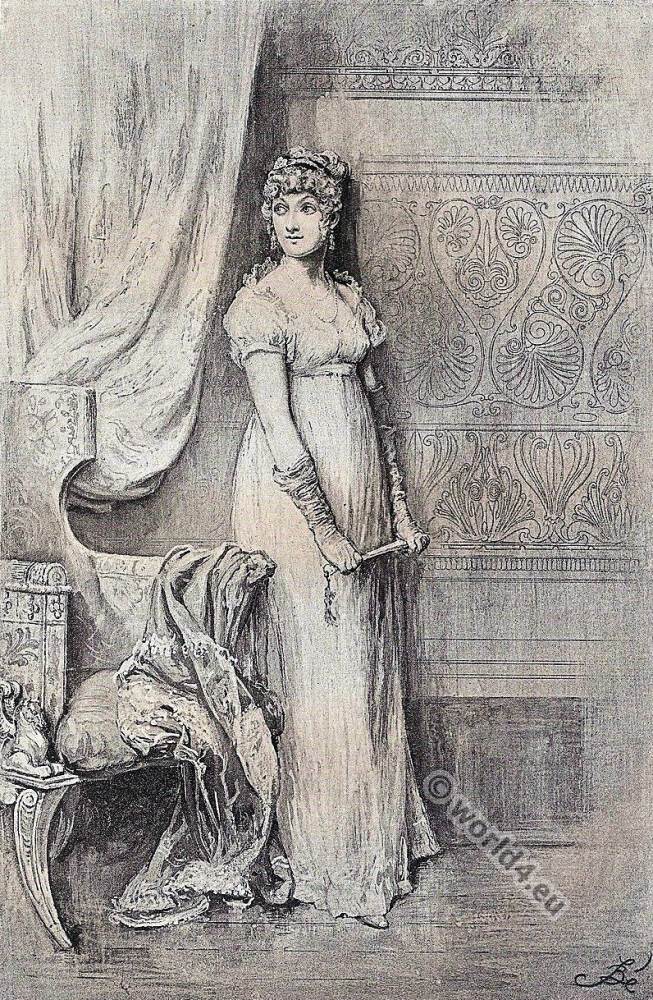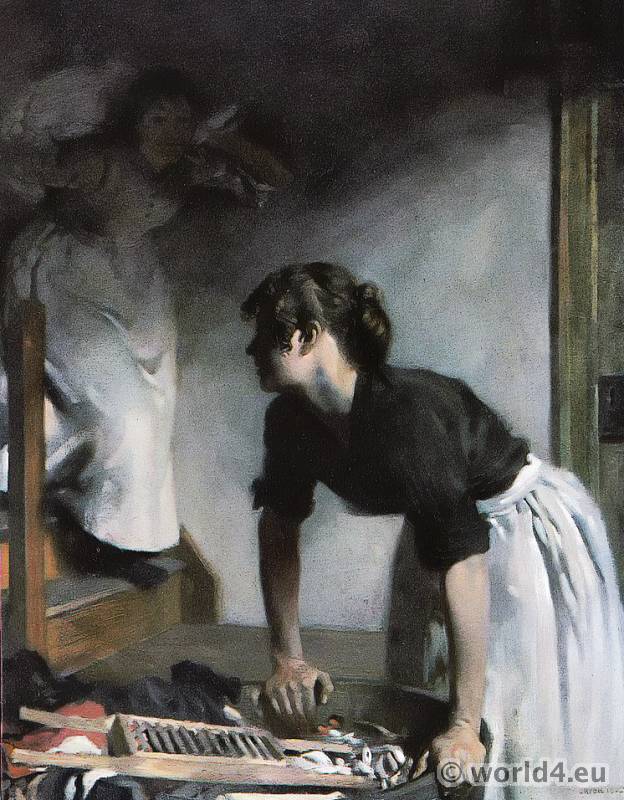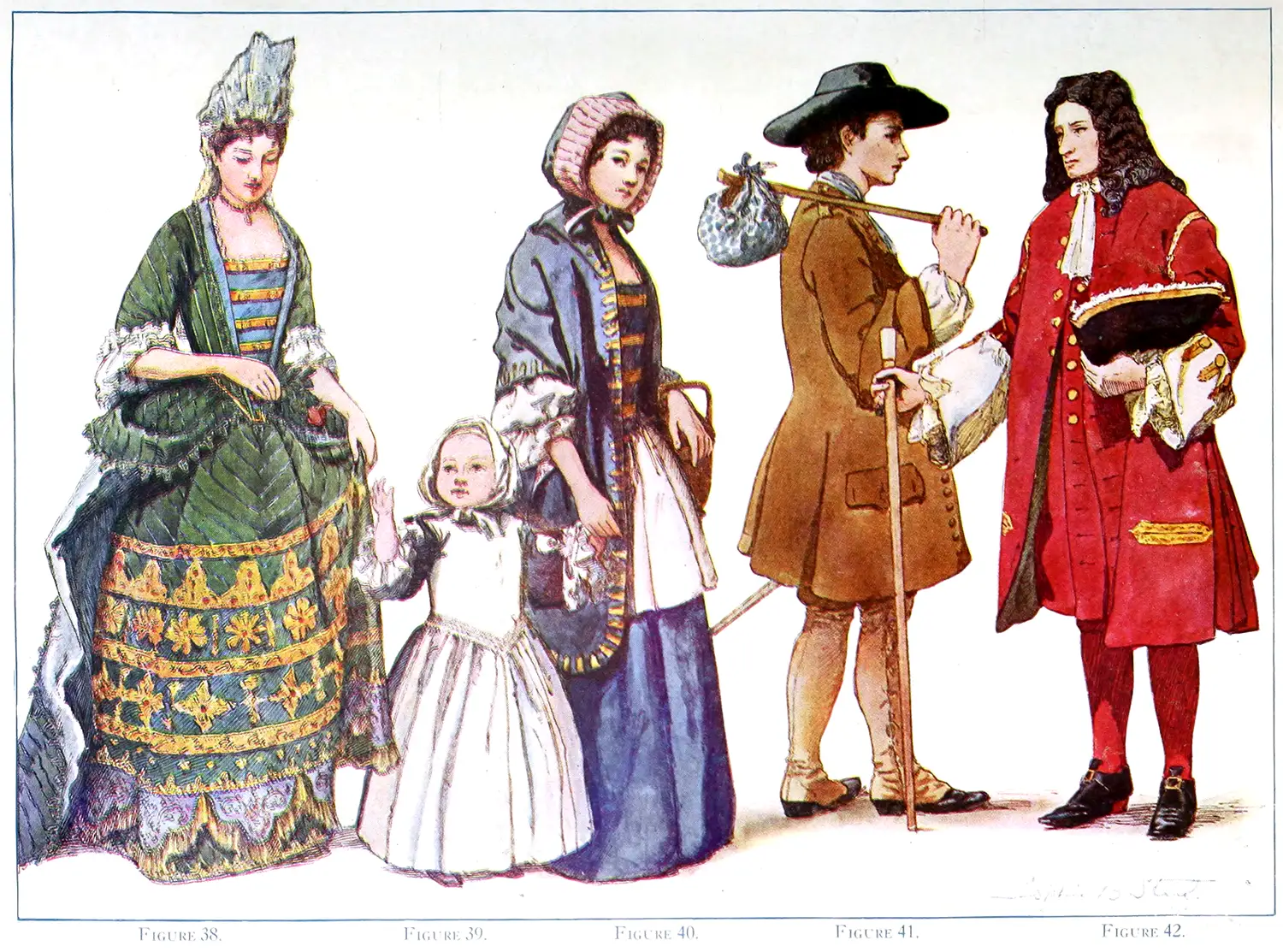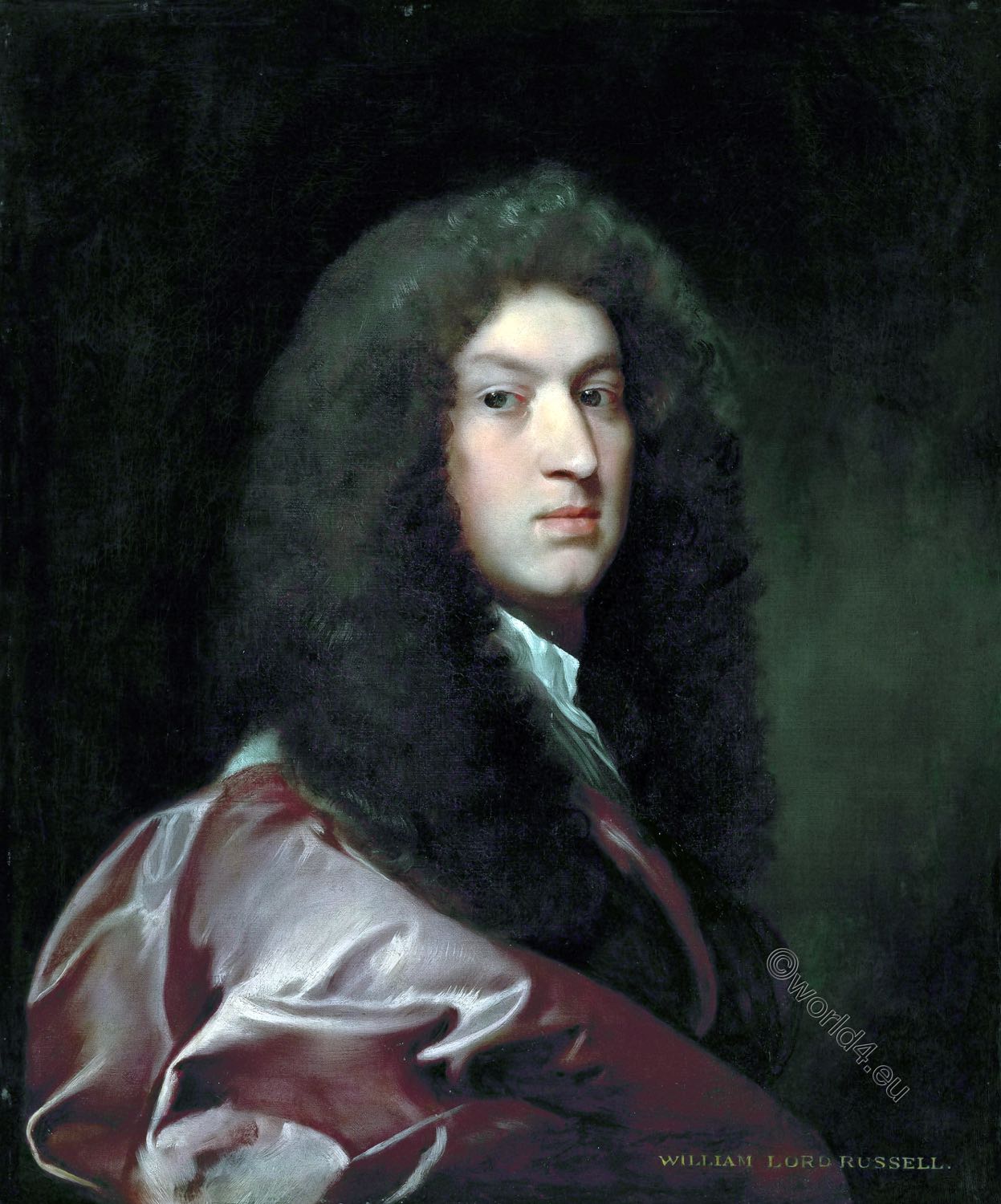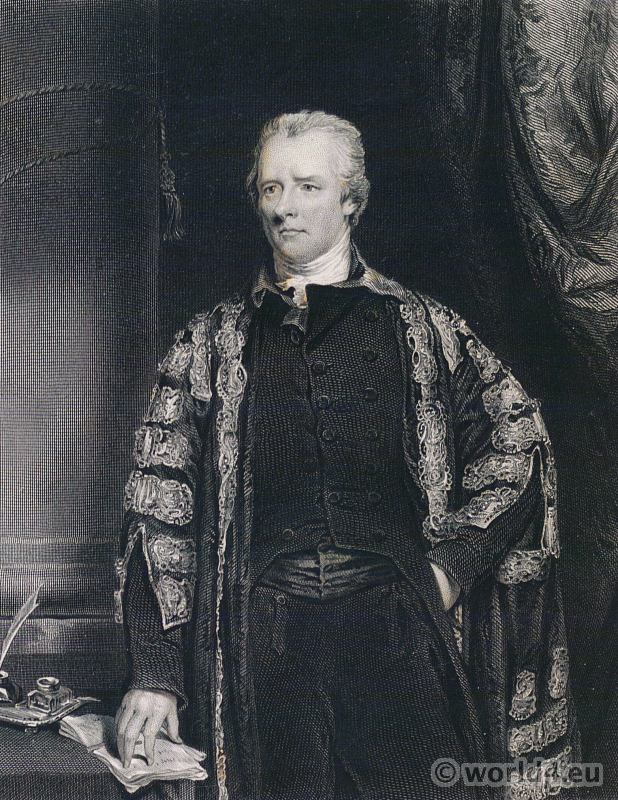
COSTUME OF THE REIGN OF KING RICHARD II.
WILLIAM BEAUCHAMP (c. 1343 – 1411), LORD BERGAVENNY. ANNO 1392.
1st Baron Bergavenny, KG. Captain of Calais. Custos of the County of Pembroke in 1392.
by Charles Hamilton Smith.
This figure is taken from an elegant painting on glass in the East window of St. Mary’s Hall, Coventry. The fine outline of the head, its animation and character, denote it to be a portrait. He is represented in a state habit, with a hood of crimson embroidered with gold; his robe of a deep purple, lined with ermine and crimson, falls in ample folds round the body and feet. The girdle is richly studded; the sleeves and hose green; on the breast he wears a cross pattee of gold suspended by a golden chain; and over the left shoulder hangs a superb belt of gold and precious stones. I have no where met with the meaning of this ornament.
Rouse, in his illuminations of the life and actions of Richard Earl of Warwick, has occasionally decorated his hero with it; the same ornament is also worn by several of the Earls of Holland, as painted in the church at Utrecht. This majestic and imposing costume seems to have been long in vogue; for specimens are found from the latter end of the reign of K. Richard II. to Edward IV.
William was the second son of Thomas de Beauchamp, 11th Earl of Warwick, from his marriage to Katherine Mortimer, the daughter of Roger Mortimer, 1st Earl of March. He was born about 1343. As the youngest son, William was originally intended for the ecclesiastical career. In the years 1358-1361 he studied at Oxford. 1361 died two of his three brothers, which is why William struck the secular career. 1367 he was knighted and participated in the army of Edward, the Black Prince (from 1330 to 1376) at the Battle of Nájera in Castile.
Sir William Beauchamp was a partisan of John of Gaunt, and at tended him in all his campaigns in France and Spain: he fought several actions at sea: In 1376 he became a Knight of the Garter, and appointed Captain of Calais. It was in this important command, when he suspected the views of Richard’s favourites, that he refused, when ordered, to deliver up his government, and seized on the King’s letters directed to the court of France. Afterwards, when John de la Pole, brother of Michael Earl of Suffolk, the great favourite, came to supersede him, in the government, he arrested and brought him a prisoner to England. The King was so incensed at this firm conduct, that he put him in confinement; but dreading some evil Consequences, soon released him again.
In July 1373 he took part in the army of John of Gaunt, 1st Duke of Lancaster (the founder of the British Royal Family Lancaster) in a prey and destruction campaign by France.
In the years 1378-1380 William served as administrator of the royal household of King Richard II. The role of William, whom he played during the stormy reign of Richard II is not entirely clear. In the years 1383-1389 he was captain of Calais, 1399 to 1401 he was general counsel of South Wales and Governor of Pembroke.
He died in 1411, leaving his son Richard, afterwards Earl of Worcester, to succeed him. Vide Dugdale’s Baronage, Froissard, &c.
This distinguished character may he introduced in many of the historic scenes of the reigns of Edward III. Richard II.and Henry IV.
Back-ground. A view of Calais from the sea, as it was in the middle of the 16th century.
Arms. Beauchamp of Bergavenny.
AUTHORITIES.
The figure from the painted glass, supposed to have been executed by John Thornton, painter and glass-stainer of Coventry, a man of great merit; the same who executed the great eastern window of York Minster, between the years 1405 and 1407.
The arms from the same under the figure, with the words Guillelmus Beauchamp d’nus de Bergavenny, in Gothic characters.
The view of Calais from Hollar’s print, compared with a rare German print without mark, of the siege of that place tempore Elizabeth.
Source: Selections of the ancient costume of Great Britain and Ireland from the seventh to the sixteenth century, by Charles Hamilton Smith. London: Colnaghi, 1814.
Discover more from World4 Costume Culture History
Subscribe to get the latest posts sent to your email.

